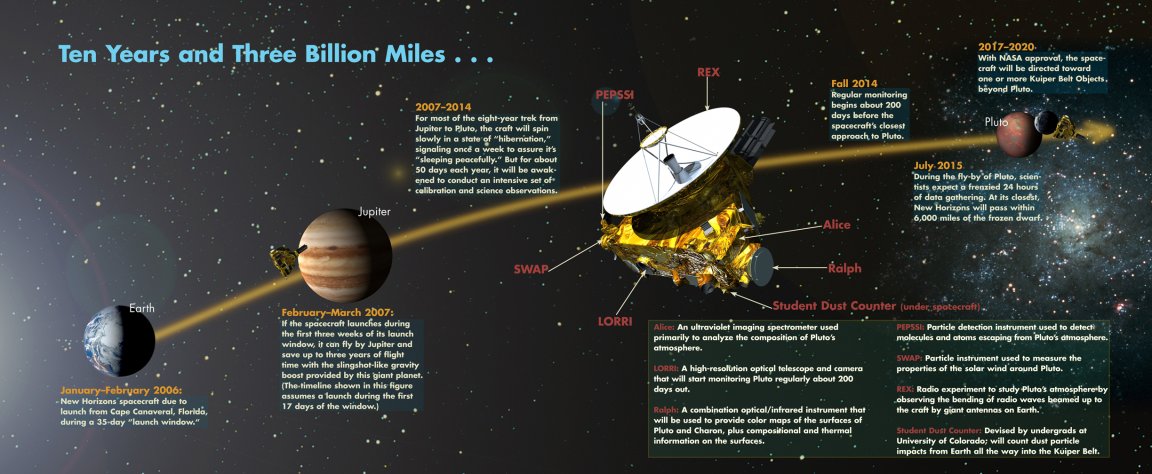

It has been a long, long ride. New Horizons was launched in January of 2006, which is less than 9 years ago. It was sent into space courtesy of a Lockheed Martin Atlas V rocket, and the little craft will approach Pluto at the end of a 9 and a half year journey in 2015 (so it still has a little ways to go). It will pass by the dwarf planet and its moons (Charon, Nix, Hydra, Kerberos, and Styx) travelling at a staggering speed of 26,7000 mph (43,000 km/h). It will then continue its path into the Kuiper belt, a disc-shaped region of volatile icy compounds such as methane, ammonia and water located past Neptune’s orbit.
And it just surpassed one of the major parts of its mission: Waking up. After 9 years (and 3 billion miles), NASA’s New Horizons spacecraft is finally awake. Bringing us one step close to Pluto. The cost of the New Horizons mission, all in all, is about 700 million dollars. That might seem like a lot of money, but it’s just 20 cents per American per year (or 20 cents for each year of the journey).
Ultimately, this mission will give us our first close look at Pluto. Currently, out best images show us little more than a tiny blob. “There is a lot of speculation over whether Pluto will look like Triton, and how well they’ll match up. That’s the great thing about first-time encounters like this — we don’t know exactly what we’ll see, but we know from decades of experience in first-time exploration of new planets that we will be very surprised,” Ralph McNutt, of the Johns Hopkins University Applied Physics Laboratory (APL), stated in reference to the 2015 Pluto flyby.
The batch of 12 images (pictres below), which were captured from July 19 through July 24, show the Pluto-Charon system from a distance of just 265 million miles (426 million kilometers) away. The team then took the separate frames and stitched them into a composite GIF, that shows their orbital dance in unprecedented resolution. According to New Horizons’ principle investigator Alan Stern (who is also the founder of Uwingu), “The image sequence showing Charon revolving around Pluto set a record for close-range imaging of Pluto — they were taken from 10 times closer to the planet than the Earth is. But we’ll smash that record again and again, starting in January, as approach operations begin.”
